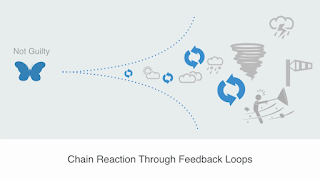HSEQ SUCCESS COMES FROM WITHIN In a new column, Arend van Campen,
manager at Tank Terminal Training, examines the current focus on HSEQ and
compliance
This article is
published in the June 2018 edition of Tank Storage Magazine
When I started my
career in the storage and tanker transport world
40 years ago, I worked
on a tanker barge in the Netherlands and
sailed the Rhine
all the way to Basel, Switzerland.
We were
transporting carcinogen cargoes such as benzene, but also
heavy fuel oil or
petrol. I remember that in the summer, we worked on
deck in just our
shorts and walked on flip-flops. I also recall that our chief
mate used toluene
to clean our fuel oil stained coveralls with a broom, laid
out flat on deck.
After they were
cleaned, we wore them again without any awareness
or information
that the toxic fumes could harm us. As a 16-year-old boy,
I was given a
bucket and a paint brush and told to open one of the tank
hatches and fill
the bucket with benzene directly from the cargo tank.
After that, the
mate ordered me to degrease the bollards with this hazardous
chemical because
it worked wonders as a solvent. Once, a barge
captain threw a
burning cigarette stub into an open cargo tank filled with
fuel oil during
bunkering operations of a sea-going vessel. He laughed and
said to me: ‘Look
Arend, nothing can happen, it won’t ignite.’ Those were
the days!
Today, I observe
that health, safety and environment (HSE) have
become top
priorities but why? Thousands of studies, articles, video’s,
training modules,
conferences, safety fairs, or PPE’s have been produced
to protect people,
assets and the environment. From virtually non-existence
or non-awareness
of HSE we now observe that the tank storage and
tank transport
industries are flooded by a myriad of rules and regulations
that are enforced
through corporate and governmental compliance.
In 2013, I wrote a
book on HSE & CSR called: ‘Safety of Ethics’ in
which I ask a
simple question: ‘What is the true intention of HSE?’ I
wrote this
conclusion on the back cover: ‘Enforcement of HSE rules when
not based on true
and right intentions (to protect life and the environment),
but with the
ulterior motivation of saving money by protecting
vested interests,
is counterproductive. The true intent of HSE should be
to protect life:
human and non-human.’ I tried to answer these three
questions based on
several incident case studies:
1. Are HSE and CSR
policies first priority? Answer found; no.
2. Are companies
prioritising liability limitation by extreme HSE standards?
Answer found; yes.
3. Do companies
sometimes mistake doing business legally with doing
business
ethically? Answer found; yes
IS THERE
SCIENTIFIC PROOF THAT ‘INTENTIONS’
MATTER? YES!
Research shows and
confirms that what currently seems to be the way
to control and
prevent ‘risks’ in HSE is being enforced from the ‘outside’.
The tendency to
focus on compliance through standardisation, rules and
regulations, which
are becoming stricter each day, is almost suffocating
normal practical
and logical ‘human’ achievement. This is known as
‘impairing
functionality’, meaning ‘losing strength’. Immanuel Kant wrote
about this in
1788, which was written long before I started sailing:
‘Rules and
regulations would simply result in hypocrisy, and that
the law (re: rules
or regulations) would be hated or at least despised.
The law would only
be followed for the sake of one’s own advantage.
Legality would be
found in the letter of actions, but not in the spirit of
minds, without
troubling oneself with motives for doing it.’
What to do with
the many books and papers on HSE, guidelines,
regulations, which
only seem to increase complexity? Who has read the
thousands of
publications, possibly contradicting each other, now filling
a HSE and
compliance manager’s office? Who has the time?
To prove the
validity of two principles: ‘the right intention and morality
before legality’
we researched and use ‘new’ so called ‘non-linear’ sciences
which are adding
value to the limited empirical or reductionist way of scientific
analysis on which
our current HSE/CSR regulations are based.
They are listed
here:
Noetic science
confirms to man that the human mind is a powerful tool
to steer reality,
because he is a part of it. The power of intention, choice
and motivation is
real. Awareness that this reality exists, would assist
decision makers to
make them cautiously. This would mean that business
leaders or
corporations should be careful of what their real intentions
are. Ulterior
motivation can be understood as an impure intention.
The power of pure
intention has to be considered as one of the factors
upon which a
sustainable decision should be made. (Dean Radin)
Systems science:
confirms Noetic Science – everything is connected,
interrelated and
interdependent (the observer effect = consciousness).
Impact on
objective reality by subjective (your) thoughts and actions.
We are not
‘outsiders’ looking in. Sustained life or living systems are
emergent
properties or in other words the resulting qualitative improvement
of a combined
interdependence and cooperation of all information
carriers. (Fritjof
Capra, Pier Luigi Luisi, Arend van Campen)
Deontology: The
science of duty or obligation. The knowledge what
is right and
proper. Current HSE risk management systems are often
based on the
opposite of deontology which is consequentialism. HSE is
a moral obligation
first. Rules become guidelines.
Relativity theory:
Eliminated the Newtonian Illusion of absolutes. (Albert
Einstein)
Quantum mechanics:
Eliminated the dream of a controllable measurement
process. Mechanistic
or deterministic thought had been playing tricks to the human mind. It gave
people the illusion that they were
objective and in
control (looking in from the outside), but subjectivity
(the observer
effect) is confirmed by quantum mechanics and quantum
consciousness.
(John Hagelin, Amit Goswami)
Chaos theory:
Eliminates the fantasy of deterministic predictability, but
found that order
from chaos is a natural phenomenon. (James Gleick)
Butterfly effect:
Had to be included in science to understand chaos
and complexity
theory as unpredictability (non-linear effects). (Edward
Lorenz)
Theory of
cognition: Life is autopoietic, which means that it creates,
maintains and
sustains itself through communication (cognition) with
the environment.
(Humberto Maturana, Francisco Varela)
Cybernetics:
Science of effective organisation. Learning and information
enables control
and steering of energy and matter of organisations
(viable systems
modelling) by the human mind and his actions. (Norbert
Wiener, Stafford
Beer)
Law of requisite
variety: ‘The variety of a regulator has to match the
variety generated
by the system which has to be regulated.’ Variety is
about the
capabilities of a system to regulate itself (by as much information,
knowledge, tools,
and capabilities as possible).’ Organisations
that apply this
law can build an adaptive HSE system, which is based
on maximum
information – all of it – and is able to learn and adapt
constantly.
Current HSE publications such as ISGOTT or PGS 29 are
non-adaptive HSE
systems because they usually are updated after a
certain time has
passed and/or new risks are experienced, which may
be years later. An
effective HSE system needs to be able to absorb
changes (variety).
(Ross Ashby)
When we understand
organisations, such as storage terminals and refineries,
as autopoietic
(self -maintaining), living, social systems of communication,
we intuitively
understand that incidents and accidents can be
prevented by
learning; sharing positive – and negative feedback (all information).
HSE risks can be
‘governed’ by information. (Niklas Luhmann)
This goes way
beyond compliance and regulations from the outside,
which are usually
too late and are often implemented only after something
bad has happened.
Tank Terminal
Training works with information feedback loops to
create syntheses
(observing and measurement of all interdependent
relationships –
all stakeholders) and use the results to draw maps.
These so-called
feedback loops maps directly show and predict HSE or
CSR risks before
they could become incidents or accidents.
CONCLUSION
Rather than
enforced compliance demanded from the outside in mechanistic
(outdated)
fashion, we found scientific proof and created tools to
build enough
variety and HSE resilience within organisations by using
information as
energy to influence matter (assets, relationships and
people: human
factors). No matter how many rules or regulations are
enforced from the
outside, they will never produce morality of character
(Immanuel Kant).
HSE has to come from within us, by the right intention.
It is an innate
feature which allows us to survive.
HSE risks are
controllable and governable by Information but need to
be managed within
boundaries of functionality. (‘Realimiteit’ or within
limits of
reality). This steering or control capacity needs to come from
within us, people,
and cannot succeed by regulations alone.
TRAINING COURSE
We train
organisations to understand the science behind this method
and how to use the
tool as an alarm system.
This is done in
two phases:
1. Operational
observation, understanding and drawing all ‘feedback
loops.
2. Building
‘requisite variety’ in a HSE/CSR system.
FOR MORE
INFORMATION
www.tankterminaltraining.com



Reacties
Een reactie posten